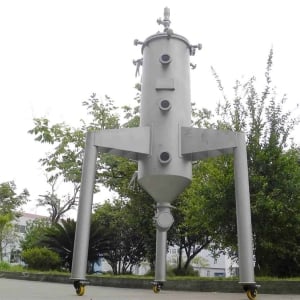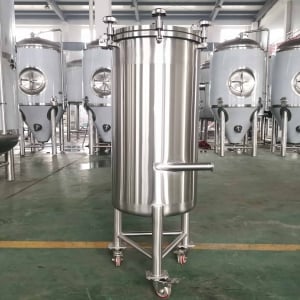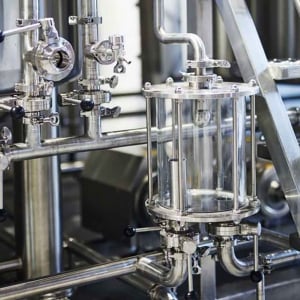Brewing Machinery
The art of brewing beer goes back centuries, but the machinery behind it has undergone a fascinating transformation. From the humble homebrew kettles to the high-tech marvels employed by large-scale breweries, brewing machinery plays a crucial role in crafting your favorite beverage. This guide delves into the world of brewing machinery, equipping you with the knowledge to navigate this exciting realm, whether you’re a homebrewer yearning for that perfect batch or a budding entrepreneur venturing into the craft beer industry.
An Overview of Brewing Machinery
Brewing machinery encompasses a diverse range of equipment, each meticulously designed to perform a specific stage in the brewing process. From the initial step of milling grains to the final stages of fermentation, bottling, and kegging, this intricate dance of machinery ensures consistent quality and optimal flavor profiles.
Here’s a glimpse into the key components of a brewing system:
- Grain Milling Equipment: Crushes malted barley and other grains, releasing starches for conversion into fermentable sugars.
- Brew Kettle (Mash Tun): Heats water and milled grains (mash) to facilitate the enzymatic breakdown of starches into sugars.
- Lautering System: Separates the sweet liquid extract (wort) from the spent grains (draff).
- Brew Kettle (Kettle): Boils the wort to sterilize it, concentrate flavors, and inactivate enzymes. Hops are added during this stage for bitterness, aroma, and preservation.
- Wort Chiller: Rapidly cools the wort to a temperature suitable for yeast pitching.
- Fermentation Tanks: Provide a controlled environment for yeast to convert wort sugars into alcohol and carbon dioxide.
- Brite Tanks: Used for conditioning, filtering, and carbonating finished beer before packaging.
- Packaging Equipment: Bottling lines, canning lines, and kegging systems for filling and sealing finished beer.
- Cleaning and Sanitation Equipment: Crucial for maintaining hygiene throughout the brewing process to prevent contamination.
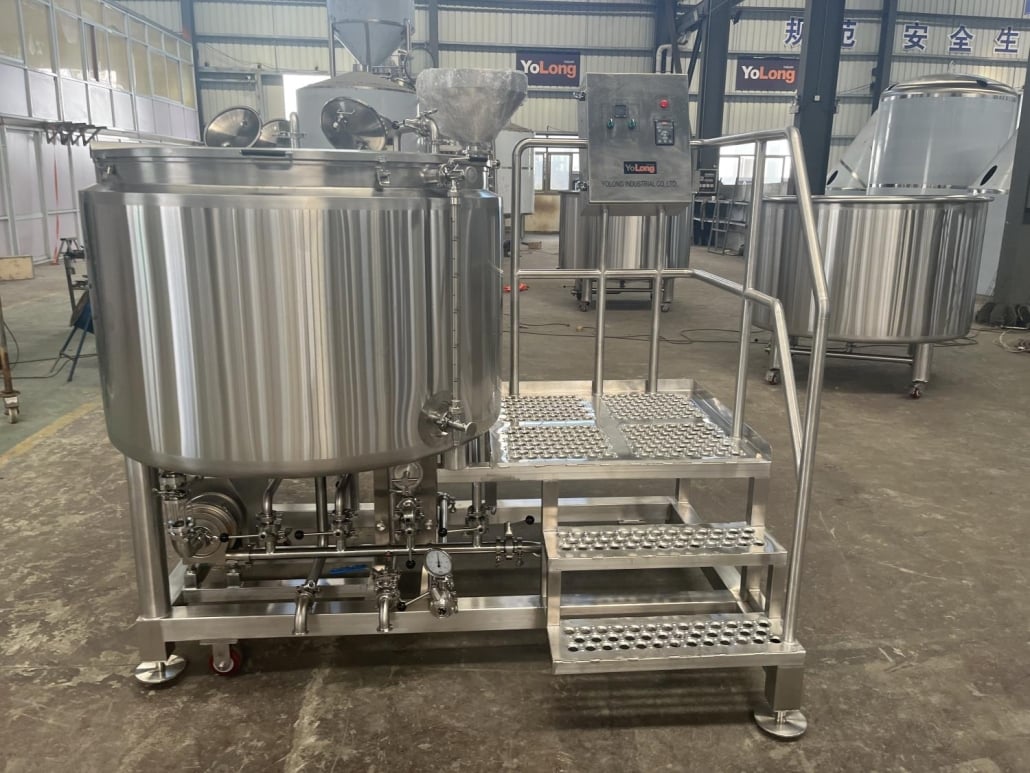
Unveiling the Brewing Machinery Landscape
Understanding the different types of brewing machinery empowers you to make informed decisions based on your specific needs and brewing aspirations. Here’s a breakdown of the core equipment categories:
| Equipment Category | Description |
|---|---|
| Grain Milling Equipment | – Mill Types: Hammer mills, roller mills (single-roller vs. two-roller) – Capacity: – Homebrew mills (1-5 lbs) vs. Commercial mills (hundreds of pounds per hour) |
| Brew Kettles (Mash Tun/Kettle) | – Material: Stainless steel (most common), copper (traditional aesthetics) – Heating Source: Direct fire, electric, steam – Volume: Homebrew kettles (5-50 gallons) vs. Commercial kettles (hundreds to thousands of gallons) |
| Lautering System | – Grainfather Systems: Combine mashing and lautering in a single vessel – Lautering Vessels: Separate vessels for lautering, offering more control over the process |
| Wort Chillers: | – Plate Chillers: Utilize cold water or glycol to rapidly cool wort – Immersion Chillers: Coils submerged in wort, relying on ice water baths for cooling |
| Fermentation Tanks: | – Material: Stainless steel (most common) – Capacity: Homebrew carboys (1-5 gallons) vs. Commercial tanks (hundreds to thousands ofgallons) – Features: Pressure control, temperature control, jackets for cooling/heating |
| Brite Tanks: | – Similar to fermentation tanks, but used for conditioning and carbonation |
| Packaging Equipment: | – Complexity varies depending on scale: Manual vs. automated bottling/canning lines |
| Cleaning and Sanitation Equipment: | – Cleaning Chemicals: Caustic soda, phosphoric acid, sanitizers – Cleaning Tools: Sprayers, pumps, brushes |
Beyond these core categories, additional equipment can enhance your brewing experience:
- Brewhouse Control Systems: Automate and monitor brewing processes.
- Grist Case/Hopper: Stores grain for efficient transfer to the mash tun.
- Pumps: Transfer liquids between various brewing vessels.
- Heat Exchangers: Transfer heat between liquids for temperature control.
This equipment landscape provides a springboard for exploration, allowing you to tailor your brewing setup to your specific needs and budget.
Brewing Process Demystified: The Role of Machinery
The magic of brewing unfolds through a series of well-orchestrated steps, each reliant on specific pieces of machinery. Let’s embark on a journey through the brewing process, highlighting the machinery’s role:
- Grain Milling:
- Equipment: Grain mill (hammer mill or roller mill)
- Function: Crushes malted barley and other grains, exposing starches for conversion into fermentable sugars.
- Impact: Grind size significantly affects the efficiency of sugar extraction and subsequent beer flavor. Properly sized grains ensure optimal extraction while avoiding extracting harsh flavors from the grain husks.
- Mashing:
- Equipment: Mash tun (brew kettle with heating source)
- Function: Milled grains are steeped in hot water (mashing) to activate enzymes that convert starches into fermentable sugars. Mashing temperature plays a crucial role in determining the final flavor profile of the beer.
- Impact: The mash tun provides a controlled environment for enzymatic conversion, ensuring consistent sugar extraction and laying the foundation for the beer’s sweetness, body, and fermentability.
- Lautering:
- Equipment: Lautering system (separate vessel or combined mash tun/kettle)
- Function: Separates the sweet liquid extract (wort) from the spent grains (draff). Lautering involves a process of draining the wort while retaining the grains in the mash tun.
- Impact: An efficient lautering system minimizes wort loss while ensuring a clear and flavorful extract ready for the boiling stage.
- Boiling:
- Equipment: Brew kettle
- Function: The wort is boiled to sterilize it, concentrate its sugars, and inactivate enzymes that could convert the desired sugars into unfermentable starches. Hops are added during boiling for bitterness, aroma, and preservation.
- Impact: The boil kettle plays a central role in shaping the beer’s character. Boiling time and hop additions significantly influence bitterness, aroma, and overall stability of the beer.
- Wort Chilling:
- Equipment: Wort chiller (plate chiller or immersion chiller)
- Function: Rapidly cools the wort to a temperature suitable for yeast pitching (typically around 68°F – 72°F).
- Impact: Wort chilling prevents unwanted flavors and aromas from developing and creates the ideal environment for yeast to thrive during fermentation.
- Fermentation:
- Equipment: Fermentation tanks
- Function: Yeast is introduced to the cooled wort, triggering the fermentation process where sugars are converted into alcohol and carbon dioxide. Fermentation tanks provide a controlled environment for yeast activity, ensuring consistent and predictable results.
- Impact: Fermentation tanks are the workhorses of the brewing process, transforming wort into beer. Temperature control during fermentation plays a vital role in shaping the beer’s flavor profile and aroma.
- Conditioning, Carbonation, and Packaging:
- Equipment: Brite tanks, packaging equipment (bottling lines, canning lines, kegging systems)
- Function: After fermentation, beer undergoes conditioning in brite tanks for clarification, filtration, and carbonation. Finally, the finished beer is packaged in bottles, cans, or kegs for distribution or enjoyment.
- Impact: Brite tanks ensure a clear, stable, and finished product. Packaging equipment allows brewers to present their creation to the world in a convenient and appealing format.
Capacity, Space, Design & Layout, Customization
When selecting brewing machinery, several key factors come into play:
- Capacity: Homebrew systems typically range from 1 gallon to 50 gallons, while commercial breweries utilize equipment handling hundreds to thousands of gallons per batch. Consider your brewing goals and production needs.
- Space: Assess the available space for your brewing setup. Compact systems are ideal for homebrewers with limited space, while commercial breweries require significant square footage to accommodate larger equipment and production flow.
- Design & Layout: Think about the overall design and layout of your brewing space. Will you prioritize a mobile and modular setup, or a more permanent and industrial layout? This decision will influence equipment selection and placement.
- Customization: Many brewing equipment manufacturers offer customization options. This allows you to tailor your system to your specific brewing preferences and production requirements.
By carefully considering these factors, you can ensure that your brewing machinery perfectly complements your brewing aspirations.
Supplier Landscape and Price Ranges
The brewing machinery landscape boasts a diverse range of suppliers catering to various needs and budgets. Here’s a glimpse into the supplier landscape and price ranges:
| Supplier Category | Target Audience | Price Range (Estimated) |
|---|---|---|
| Homebrew Equipment Suppliers: Northern Brewer, Midwest Supplies, Brewer’s Friend | Homebrewers | $100 – $5,000+ |
| Small-Scale Commercial Equipment Suppliers: Ss Brewtech, Spike Brewing | Microbreweries, Breweries with limited space | $5,000 – $50,000+ |
| Medium-Scale Commercial Equipment Suppliers: DME Brewing Solutions, Paul John | Established Breweries, Breweries with Expansion Plans | $50,000 – $500,000+ |
| Large-Scale Commercial Equipment Suppliers: Krones, GEA Brewery Systems | Large Production Breweries | $500,000+ |
It’s important to note that these are estimated price ranges and can vary depending on specific equipment configurations, features, and material quality. Obtaining quotes from multiple suppliers is crucial for securing the best value for your investment.
Installation, Operation, and Maintenance Considerations
Brewing machinery, especially larger commercial systems, requires careful installation, operation, and maintenance to ensure optimal performance and longevity. Here’s a breakdown of these crucial aspects:
| Aspect | Description |
|---|---|
| Installation: | Proper installation by qualified professionals is essential for ensuring equipment functionality, safety, and adherence to regulations. |
| Operation: | Brewer training is often recommended, particularly for complex commercial brewing systems. Understanding proper operation procedures is vital for producing high-quality beer and avoiding equipment damage. |
| Maintenance: | Regular cleaning and maintenance are paramount for keeping your brewing machinery in top shape. This includes sanitation procedures to prevent contamination, lubrication for moving parts, and general upkeep to address wear and tear. Developing a comprehensive maintenance plan will prolong the lifespan of your equipment and ensure consistent brewing results. |
Choosing the Right Brewing Machinery Supplier
Selecting the right brewing machinery supplier is a critical decision that lays the foundation for your brewing success. Here are some key considerations to guide you:
| Factor | Description |
|---|---|
| Supplier Reputation: | Research the supplier’s reputation within the brewing community. Look for positive customer reviews, industry recognition, and a proven track record of delivering quality equipment and support. |
| Experience: | Choose a supplier with experience catering to your specific needs. Homebrewers may prioritize suppliers specializing in user-friendly homebrew equipment, while commercial brewers will benefit from suppliers with expertise in large-scale brewing systems. |
| Equipment Selection: | Evaluate the supplier’s product portfolio to ensure they offer the equipment that aligns with your brewing goals and production capacity. |
| Customer Service: | Prioritize suppliers known for exceptional customer service. This includes pre-sale consultations, technical support, and the availability of spare parts for maintenance and repairs. |
| Pricing and Value: | While cost is a factor, focus on finding the best value for your investment. Consider the quality, features, warranty, and long-term support offered by the supplier. |
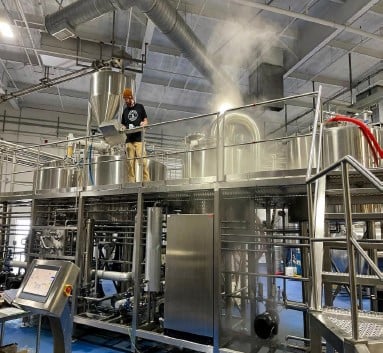
the Pros and Cons of Brewing Machinery
Every brewing machinery choice presents a unique set of advantages and limitations. Here’s a table outlining some of the pros and cons to consider:
| Factor | Pros | Cons |
|---|---|---|
| Homebrew Equipment: | – Affordable – Easy to use – Compact and space-saving | – Limited capacity – May lack automation features |
| Small-Scale Commercial Equipment: | – More automation compared to homebrew systems – Allows for increased production volume | – Higher initial investment – Requires more space than homebrew equipment |
| Medium-Scale Commercial Equipment: | – Suitable for established breweries – Offers greater production capacity and flexibility | – Significant upfront cost – Requires dedicated space and infrastructure |
| Large-Scale Commercial Equipment: | – High production capacity – Caters to large-scale brewing operations | – Extremely expensive – Requires significant expertise to operate and maintain |
Understanding these trade-offs empowers you to select brewing machinery that aligns with your brewing aspirations and resources.
FAQ
Q: What is the best type of brewing machinery for me?
A: The ideal brewing machinery depends on your brewing goals, production volume, and budget. Homebrewers can thrive with user-friendly homebrew systems, while commercial breweries will require equipment tailored to their specific production needs. Carefully consider the factors outlined in the “Choosing the Right Brewing Machinery Supplier” section to make an informed decision.
Q: Where can I find used brewing machinery?
A: Several online marketplaces and brewing forums offer listings for used brewing equipment. Be sure to thoroughly inspect any used equipment before purchasing to ensure it’s in good working condition.




